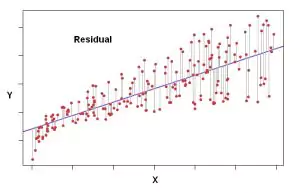In the realm of statistics, the letter ‘n’ holds significant meaning. It represents the sample size, which plays a crucial role in various statistical analyses. A thorough understanding of the concept of ‘n’ is essential for researchers and analysts alike. Even when I went to do my statistics homework, I noticed how crucial understanding the “n” in statistics is. In this article, we will delve into the significance of ‘n’ and explore its impact on statistical testing, reliability, and the overall validity of research findings.

✅ AI Essay Writer ✅ AI Detector ✅ Plagchecker ✅ Paraphraser
✅ Summarizer ✅ Citation Generator
What is ‘n’ in Statistics?
The term ‘n’ refers to the number of observations or individuals in a given sample. It signifies the size of the sample being analyzed and influences the accuracy and generalizability of the results obtained. Whether it’s a survey, experiment, or observational study, the value of ‘n’ is a key factor that statisticians consider.

The Importance of Sample Size
The significance of sample size stems from its direct influence on the outcome of statistical analyses. Let’s explore why sample size matters in statistical research.
One of the primary reasons for emphasizing a larger sample size is its ability to increase the chances of detecting a significant difference. By including more observations, researchers can better capture the variability present in the population under study. Consequently, a larger sample size enhances the statistical power of the analysis, enabling researchers to uncover meaningful patterns and effects.
While larger samples offer increased statistical power, it is important to acknowledge the associated costs. Collecting data from a larger sample often requires more resources, such as time, money, and manpower. Researchers must strike a balance between the desired sample size and the available resources to ensure an efficient study design without compromising accuracy.
The Role of ‘n’ in Statistical Significance
Statistical significance is a vital concept in research, indicating the likelihood of an observed difference being due to more than just chance. Understanding how ‘n’ influences statistical significance is crucial for drawing accurate conclusions.
To comprehend the impact of sample size on statistical significance, let’s consider an example.
Suppose we are conducting a study to evaluate the effectiveness of a particular diet regime on weight loss. We randomly select two groups of participants, one with a sample size of 20 and the other with 40, both drawn from the same population.
To visualize the relationship between sample size and statistical significance, we can examine the distribution curves for each scenario. The curves represent the possible sample means for the two groups, assuming no difference between the diet and no effect (null hypothesis).
In the case of the sample size of 20 (n=20), the curve is wider, indicating a broader range of potential weight changes. However, with a sample size of 40 (n=40), the curve narrows, suggesting a more precise reflection of the population mean. Consequently, a weight change of 3kg would be more statistically significant in the group with a sample size of 40, as it falls towards the extreme end of the distribution curve.
Reliability of Sample Mean
The reliability of the sample mean as a representation of the population mean is an essential aspect of statistical analysis. A larger sample size leads to a more accurate estimation of the population mean. This reliability is quantified using a measure called the standard error of the mean (se).
Understanding Standard Error
The standard error of the mean combines the standard deviation of the parent population (a fixed value) with the sample size (a variable we can control). A smaller standard error indicates a more precise estimate of the population mean.
Enhancing Accuracy with Larger Samples
Imagine conducting an exit poll during an election. Asking only two people about their voting preference would yield less reliable results compared to interviewing 2,000 individuals. Similarly, in statistical analysis, a larger sample size enhances the accuracy of the findings.
With a larger sample, the distribution of sample means becomes narrower and spikier, indicating a closer representation of the population mean. This precision enables researchers to detect even subtle differences or effects reliably.
Calculating the Optimum Sample Size
Determining the optimal sample size for a study involves careful consideration of various factors, including the specific difference researchers wish to detect and the standard deviation of the population.
By utilizing a formula that incorporates these parameters, researchers can estimate the sample size necessary to achieve statistically significant results. This calculation ensures that the study is adequately powered to detect meaningful effects without oversampling or underestimating the required sample size.
Conclusion
In the field of statistics, the sample size denoted by ‘n’ holds significant importance. A larger sample size increases the likelihood of detecting meaningful differences, although it comes with associated costs. By carefully considering the optimal sample size, researchers can enhance the reliability and validity of their findings. Understanding the role of ‘n’ in statistical significance and the reflection of the population mean enables researchers to design robust studies and draw accurate conclusions.
You can find more STEM Guides in our designated category here at A*Help!
FAQ
Follow us on Reddit for more insights and updates.





Comments (0)
Welcome to A*Help comments!
We’re all about debate and discussion at A*Help.
We value the diverse opinions of users, so you may find points of view that you don’t agree with. And that’s cool. However, there are certain things we’re not OK with: attempts to manipulate our data in any way, for example, or the posting of discriminative, offensive, hateful, or disparaging material.